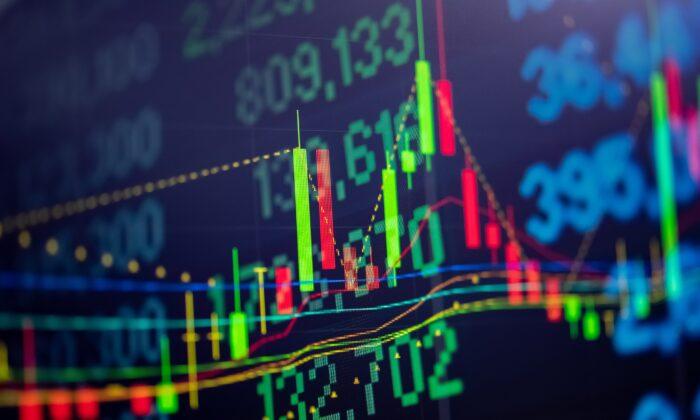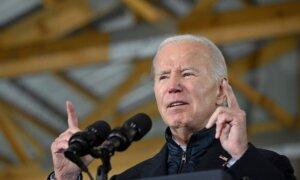Economists love data. It’s their bread and butter for how they make judgments about economic health. It’s never been perfect. But it’s what they have and there has been a general sense that the professionals behind the data are doing the best they can.
Because of official data, a recession hasn’t been called since the original short one caused by lockdowns in 2020. Since then, the gross domestic product (GDP) has skated above zero, while unemployment seems not high and the jobs numbers in general have been confusing but not catastrophic. The same goes for other measures such as business investment, inventories, purchases, prices, and so on.
In the past 18 months, those of us who follow this stuff carefully have begun to notice anomalies. The official numbers are being spun in press releases in a positive direction but then the underlying data don’t seem to support that. There have been strange things happening, such as a huge divergence between household and institutional numbers on jobs. The pricing indexes are being dragged down by weighting strategies that don’t seem to match consumer experience.
The GDP data has long been suspect because government spending is considered part of output, and, meanwhile, exports add to GDP whereas imports take away from it. This latter point maybe made some sense when trade balances reflected gold flows, but it’s hard to make sense of this scheme in a world of floating fiat currencies.
National income accounting (including GDP) originated in the fascist era of the 1930s, when gigantic empires were competing to beat each other in raw productivity. It was like a game, and the GDP was the scorecard. But how real and how accurate is it, especially now that the structure of wealth has changed so much?
I’ve begun to ask some fundamental questions about these things that we think we know. How sure can we really be that the numbers we are given are even based in reality?
This matters for more than just economists. Much of what we believe we know about the world around us is given to us in the form of authoritative data. Modern life wires us to believe it over our own intuitions and personal experiences.
And yet we’ve known for years now that polling data are bunk. They have been wildly wrong in the past, most spectacularly in 2016, when the whole of corporate media was 100 percent confident in a Hillary Clinton victory. Polls are always interesting, so it’s easy to forget just how much they have been debunked over the years.
Opinion polling is in terrible shape. In 2000, 90 percent of polls were conducted by calling people on the phone. Even 10 years ago, this was common. No more. Now only 9 percent do this, simply because no one picks up.
Today, polling data comes from organizations that put together panels of people who reliably answer anything and then use an assumption of normal distribution to extrapolate to the whole population. In other words, they aren’t random: the same people are asked over and over.
So one does wonder. Just how bad are the data we use to understand and interpret our world? What if it isn’t just wrong but wildly wrong? What if it’s giving us a completely fake version of reality?
My personal memory goes back to the ‘80s, when economists were confident that the economic output of the Soviet Union was still on track to eventually beat the United States. An economist named Warren G. Nutter back in the 1970s was already saying that all this data was the big fakeroo, but hardly any of his colleagues believed him. After the whole Soviet scheme fell apart, revealing terrible poverty and fraudulent output at all levels, economists finally realized that they had been wrong for decades, dating all the way back to the 1930s.
It turned out that the Soviets built lying about statistics into how they had come to live. Everyone was used to lying: the factory managers, the bureau heads, the party officials, the reporting agencies, and so on. This is what happens when you make reporting bad news a crime. Everyone magically comes up with tremendously good news.
Let’s just say that governments aren’t above such statistical racketeering. You have surely noticed how much of life in the United States today under the Biden administration shares in common with the old Soviet system. Sure, it’s nice and has a more persuasive veneer of democracy, but what’s called lawfare is increasingly deployed to purge official ranks, and large corporations are ever more playing footsie with the leviathan state.
The problem traces to the chaos of lockdowns and the loss of trust of so many businesspeople even to talk to agencies or report numbers to them. Essentially, we’re seeing ever lower levels of participation in the kind of polling once considered a normal part of civic life. Many people just don’t want to play the game anymore and have simply stopped answering.
Mr. Zumbrun reveals shocking changes in participation in all mainstream economic surveys:
Current population survey participation in 2014: 90 percent. Today: 70 percent.
Consumer price index for housing participation in 2014: 71 percent. Today: 58 percent.
Consumer price index for commodities and services participation in 2014: 67 percent. Today: 54 percent.
Employment cost index participation in 2013: 73 percent. Today: 47 percent.
Current expenditures interview participation in 2014: 67 percent. Today: 42 percent.
Current employment statistics participation in 2014: 63 percent. Today: 42 percent.
Job openings and labor turnover participation in 2014: 65 percent. Today: 32 percent.
“Other types of error are potentially much bigger,” Mr. Zumbrun writes. “What if the people who don’t respond to surveys are much different than those who do? What we end up with is data that’s just fuzzier than it used to be.”
One does wonder.
Mr. Zumbrun ominously observes: “This has created an environment in which it’s easy to cherry pick a starting point for data comparisons and come up with nearly any result you would like. ... It’s no surprise that many people don’t totally know what to make of it all.”
Any result? Yes. And that’s the problem. If all of this is correct, we don’t really know the inflation rate. We don’t know the GDP. We don’t know the jobs situation. We don’t know expenditures. We don’t know much of anything we cite as a signal of economic health.
A lot of this problem traces to the incredible chaos that began in 2020. It prompted our journalist friend to offer his “fairly severe” critique of the problems with data.
Even though the article is understated, we have to consider what it means. We might not really understand much at all about the “national mood,” about which candidates are up or down, about whether inflation is really going away, or anything much else at all.
Think of how much we rely on the authority of data. Much of what we think we know comes from it, and its accuracy is wholly dependent on the methods used to collect it and the veracity of the responses. If ever fewer people are participating at all, what good is it really? Can you really extrapolate from a small and shrinking sample to the whole population using statistical techniques?
For some time now, I’ve speculated that perhaps we never left the 2020 recession, that the job numbers are a load of bunk, that the nation is far angrier than we know, that the government and all official institutions are less trusted and less popular than we think.
It turns out that our worst fears might indeed be true. We just aren’t being told, and for two reasons: We have no way really to measure this and the people pretending to do the measuring have every incentive to lie about it.
Maybe this realization can give you comfort in the new year. It certainly does me, because it makes me realize that my intuitions aren’t crazy. They might be more accurate than any of the data reported by the mainstream press.







